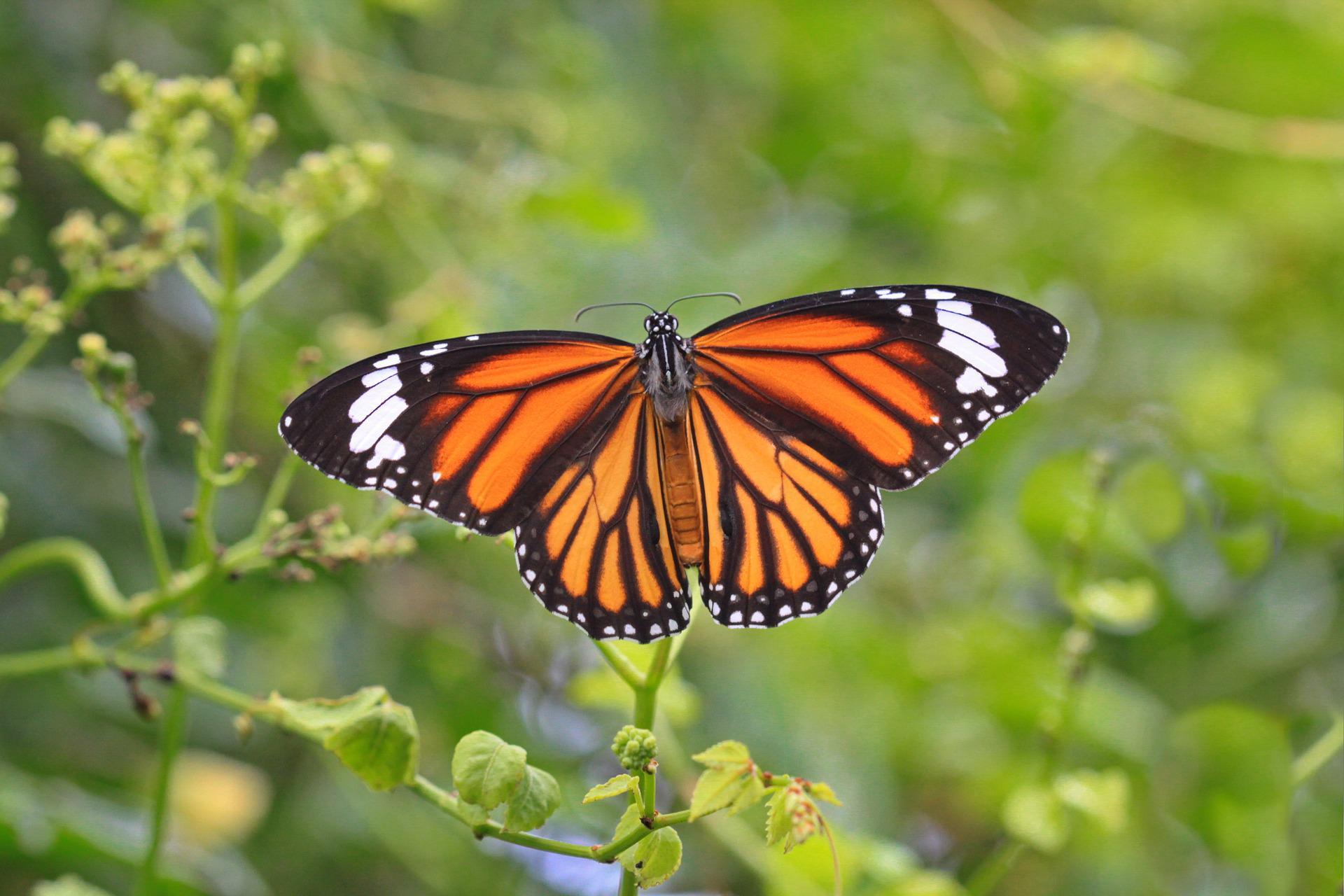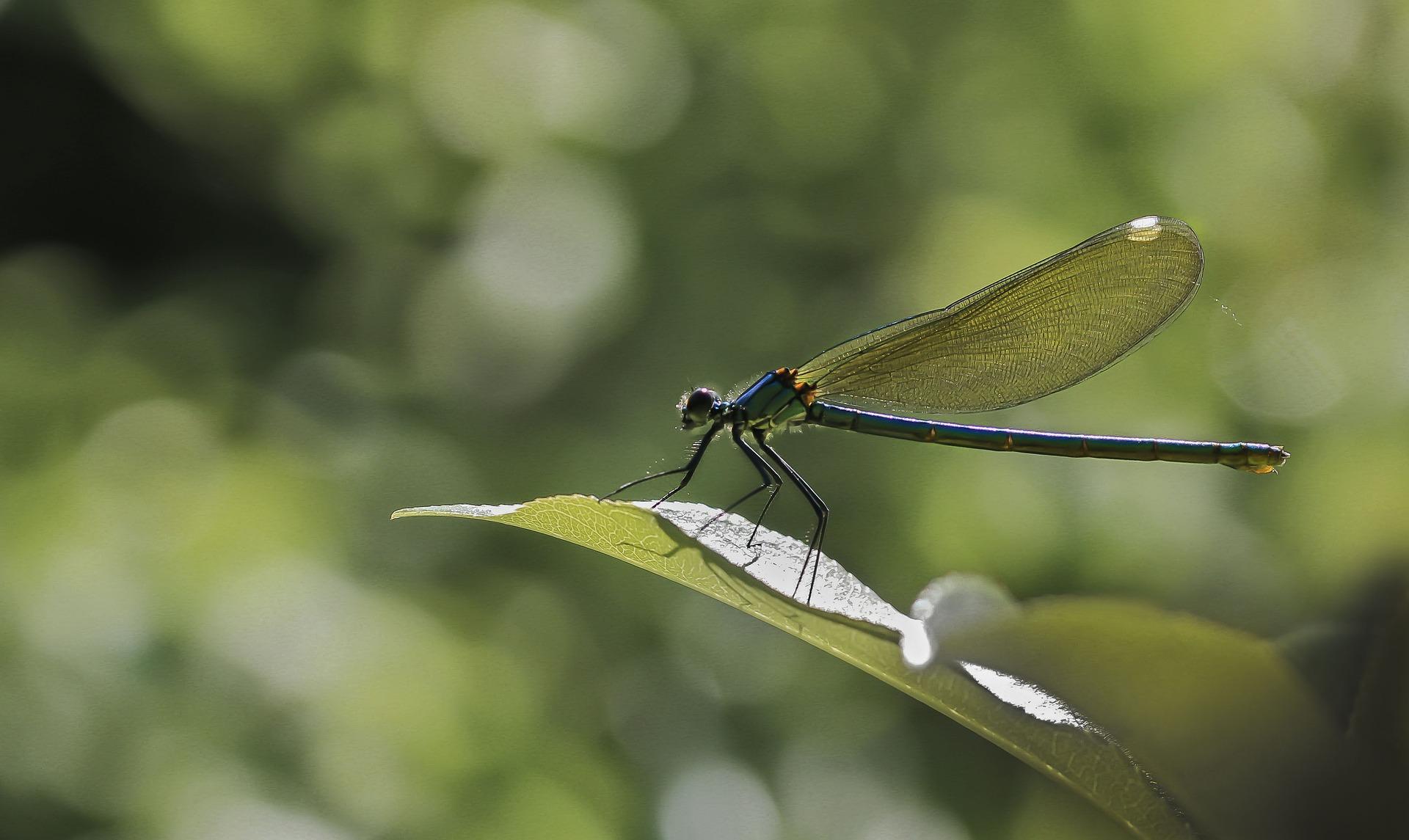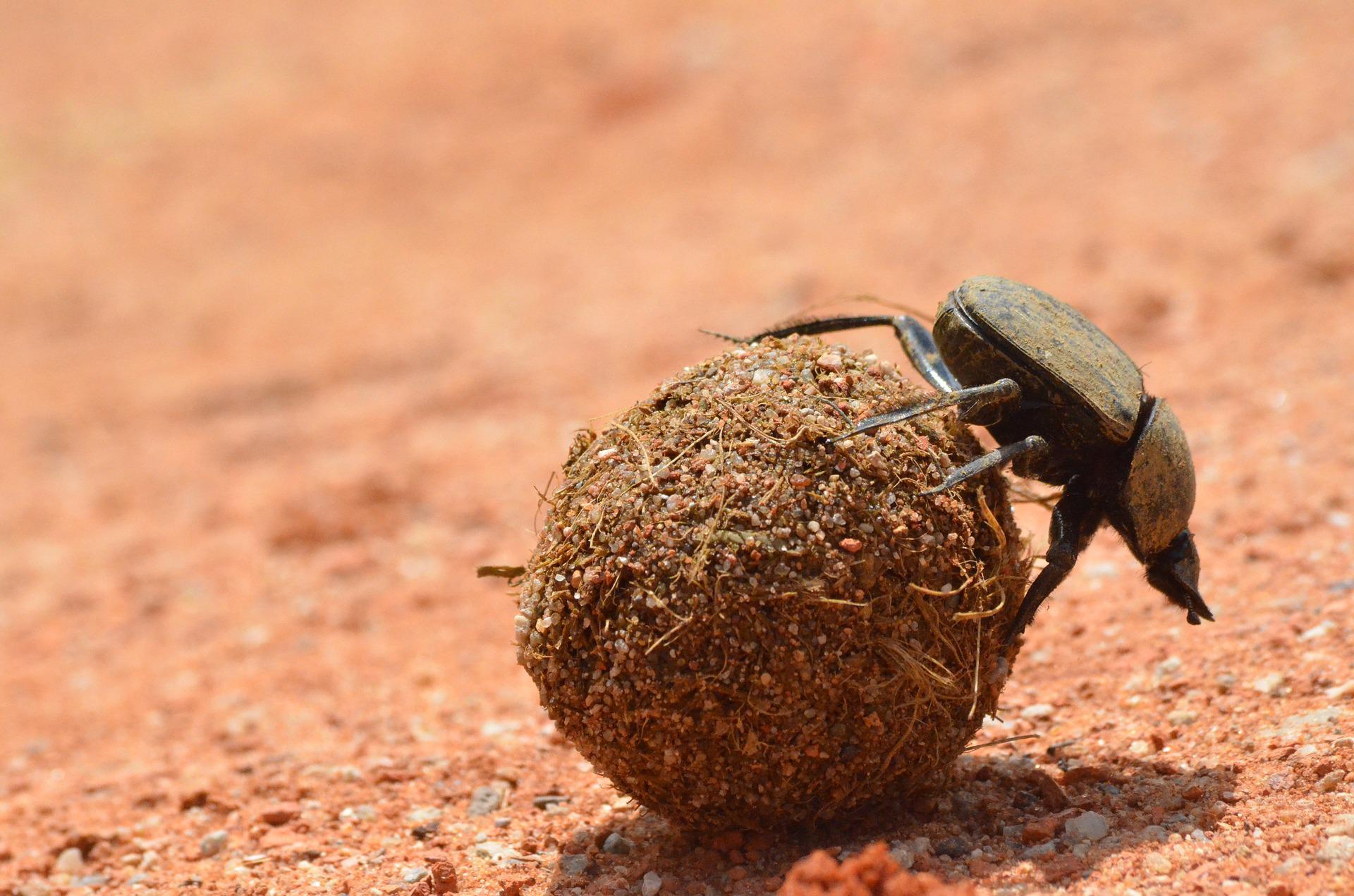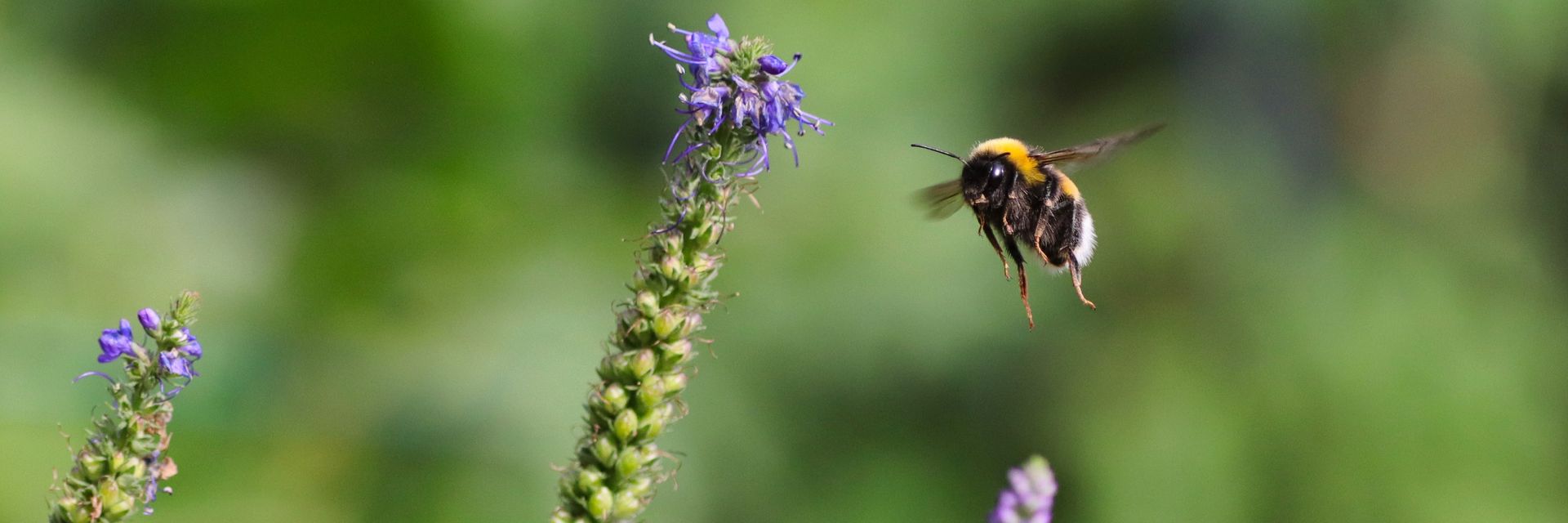The well-being of insects is threatened by worldwide habitat destruction and other factors. But there are some things you can do to encourage insect conservation.
◊
What’s become of the bumblebees? As recently as 20 years ago, the American bumblebee was present in abundance all across the United States, particularly in the Midwest, where prairies and grasslands were their natural habitat. But somehow, over the first two decades of this century, their number rapidly declined to the point that a full 90 percent of the bumblebee species has disappeared.
It’s not like you can point to one cause of their disappearance – there are numerous reasons, so many that one entomologist has described it as “death by a thousand cuts.” But certain factors do stand out: Disease, habitat loss, and pesticide poisoning certainly carry much of the blame.
There are a total of 46 species of bumblebees, which are distinct from honeybees yet equally important as plant pollinators. Their rapid decline is worrying. Pesticides are particularly dangerous to their well-being. We’ll discuss all of this below. But first, a little history.
Learn more about bee disappearance and other environmental issues in the MagellanTV seriesEco-Eye with Duncan Stuart.
Causes of Insect Decline
The 20th century witnessed phenomenal growth all across the world. Population tripled over the period, from a total of somewhat under two billion people in 1900 to more than six billion 100 years later. Growth in technology was similarly explosive. Where small-family farming was once the norm, large-scale corporate farming gradually replaced it. This increased yields, yet the tradeoff was often introducing monoculture in place of diverse land use.
Of course, farming wasn’t the only industry that boomed. Diversity of land use was sacrificed for progress. Forests were clear-cut and fallow fields were developed to make room for mining, housing, and other uses. Wetlands and swamps were drained – “reclaimed” in the misleading parlance of developers – so the acreage could be exploited for its perceived value. High-speed highways were constructed, crisscrossing otherwise uninhabited areas to connect urban centers.
This heedless, galloping momentum has come at a great price to the Earth and its inhabitants, and the law of unintended consequences has been very much in effect. Rainforest destruction, particularly in the tropics, has contributed to human-induced climate change, bringing along with it extreme weather, including deadly flooding in some places and desertification in others. Many species of animals have become threatened with extinction or have already disappeared; the losses range in size from the Rocky Mountain locust to the Barbary lion.
While a consensus among experts doesn’t exist, all agree that more research needs to be done, particularly among the class of insects. It is perhaps easy to ignore the loss of insects, both in abundance and in the number of species, because many of us don’t fully appreciate the key role insects play in the web of life. We may even celebrate the destruction of insect “pests” by the constant spraying of herbicides and the electric buzz of nighttime “bug zappers” in our backyards.
Education will be vital in slowing the seemingly inexorable loss of beneficial insect populations on our planet. The signs aren’t good, but perhaps it’s not too late.
It’s Not Just Bumblebees that Keep Our Food on the Table
Insects are important, indeed vital, to the survival of humans, a fact that may often be overlooked. In any case, it’s certainly not a high strategic priority in planning for economic development across the globe. But insects perform functions that keep us well – and well-fed. Crucially, insects such as bees and butterflies keep humans alive by performing the essential act of pollinating flowering plants, especially crops. A third of the world’s food supply is pollinated by insects, and three-quarters of all flowering plants require pollination. Fully 70 percent of humans’ intake of Vitamin C comes from pollinated crops. Imagine that vital source of nutrition being severely restricted, or even disappearing.
Studies indicate that 40 percent of insect species are in decline and, more concerning, a third are currently threatened with extinction. We have heard of the threat to bees, which are highly prized for their intelligence and pollinating prowess and yet are threatened by ecological forces both well-known and little-understood. But many more insects than bees are facing the same threat of species collapse. In July 2022, the International Union for Conservation of Nature officially declared the majestic monarch butterfly as endangered.

The endangered monarch butterfly. (Source: gyulche1 from Pixabay)
Butterflies as well as honeybees, bumblebees, and wild bees (which do not form colonies) each face unique threats to long-term survival. They are joined by other pollinators including beetles, moths, ants, grasshoppers, wasps, and flies that are threatened even as they are responsible for the health of crops ranging from almonds to broccoli, cherries to watermelon.
Why do bees buzz? It helps them collect pollen! While foraging, bees vibrate their wing muscles to buzz loudly at the specific frequency that shakes pollen from flowers. That allows bees to collect it on their fur. (Yes, bees have fur.)
Many of these insects (such as flies) are known to spread disease as well as pollen and are rightly viewed as pests. But consider the cost to humans if all these species are eliminated through pesticides and insecticides such as neonicotinoids. Insects are vital to the health of our crops, certainly, and they’re also ground zero of the foundation of the world’s food chain.
The Food Web Starts with Insects and Ends with Us
Consider the lowly but beautiful dragonfly. This flying insect, found on most continents, spends most of its short life, after the larval stage, hovering on or near freshwater. For sustenance, it eats other small, water-dwelling insects such as mosquitos, flies, and wasps. In turn, the dragonfly is hunted and consumed by larger animals, including fish, frogs, birds, and even other dragonflies.

A dragonfly rests on a leaf. (Source: Gabriela Piwowarska from Pixabay)
A similar story can be told about most insects. They feast on smaller creatures and are prey to larger, hungry beings of the water, land, and sky. From this humble foundation spins a worldwide food web. This web eventually expands to include apex predators, and there is no predator more apex than human beings – omnivores whose taste for prey seemingly knows no bounds.
But we know there are massive threats to the well-being and ongoing existence of the world’s smallest (and most populous) beings – insects. Scientific estimates peg the decline in insect population to approximately 2.5 percent annually. That may not sound like a lot, especially considering it’s estimated that there are currently about 1.4 billion insects per human on the planet at this time. However, compound 2.5 percent annually over the length of a human generation and there could very well be only a minuscule population of insects left by the time our children mature.
If such a dire prediction should come true, our species could be in big trouble. If you like bananas, for example, the disappearance of insects in the tropical regions where the nutrient-rich yellow fruit grows should concern you. Bananas are primarily pollinated by birds and fruit bats, which feed on insects. In fact, most bats eat only night-flying insects, and deforestation, as well as other factors, are decimating the furry flyers’ food supply. Fewer insects mean fewer bats, which means fewer bananas for you to enjoy.
Now, think about the food chain and all the pollinated fruits and vegetables we depend upon. As insects are a crucial rung in the chain, their loss could lead to diminishing food stocks, mass starvation, and even social unrest as societies compete for access to livestock and crops.
Dung Beetles Are Nature’s Morticians
Beyond insects’ established value to the cycle of nature from pollination of plants and as links in the food chain, some species perform yet another highly desirable task that no one else wants. Dung beetles, which are found on every continent warmer than Antarctica, are responsible for breaking down the excrement that’s created by every living creature. They’re also expert at removing dead leaves and other natural detritus from the forest floor.

A dung beetle collects its bounty in Zimbabwe. (Source: Baynham Goredema from Pixabay)
These little bugs, which were sacred to ancient Egyptians, are massively helpful at breaking down waste, separating it, and carting it away for their own purposes of nesting and food. And not only do they revel in the droppings left by animals, they fertilize the land they occupy by returning nutrients to the soil, ensuring its ongoing health to grow grasses and other products of the land.
By now, you’ll surely anticipate what I’m about to tell you: Despite their clear value to Earth’s ecosystem, half of all species of beetles are threatened with extinction. Habitat destruction and climate change have taken their toll. The rampant use of insecticides to ensure crop health strikes beetles down as surely as it kills other insects that are less desirable to productivity and profits.
But what can be done?
A Primer on Conserving Beetles, Dragonflies, and Most Other Insects
Luckily, there are various actions that each of us can take to help to preserve insect life. Even in the most polluted, despoiled environments, simple actions can give an assist to the health of buzzing bugs and other beneficial insects. Following are four actions that individuals can do.
Want to become a “citizen scientist” in service of butterfly conservation? If you live in the U.K., you can get active by connecting with the Big Butterfly Count. In America, there’s the 4th of July Count sponsored by the North American Butterfly Association.
1. Start a ‘Sanctuary Strip’
No matter where you live, if you have a strip of green in your front yard or back, you can create a sanctuary for pollinators and other creepy-crawly beings. Select a diverse group of flowering plants that are native to your environment and install them together, say, along the border of your yard. You may need to dig up a small portion of your manicured green lawn, but we’re advocating for the insects here – and a lawn that’s kept alive with herbicides is anathema to the kind of bugs we need to flourish. If you have questions about which plants are native to your environment, ask the experts at a garden supply, greenhouse, or nursery in your area. They’ll be happy to advise you.
Even if you have no lawn space to devote to insect maintenance, you can help with a judicious selection of plants on your balcony or outside your window. If you plant it, they will come.
2. Give Butterflies a ‘Landing Area’
Butterflies are glorious migratory creatures that travel thousands of miles each season from summer to winter. Many species of butterflies in North America traverse different regions of the U.S. and wind up among the forests of Central Mexico. They need ample sustenance along their migratory paths, and, if you know just a bit about them, you can easily help them along their way.
If you’re planning to plant an area on your property where the wild things grow, make some room for beneficial species of milkweed, the butterfly’s favorite food. There are some milkweeds that can be harmful to them, so avoid tropical milkweed, those with deep red flowers. Better to choose common milkweed. Find a place with moderate sunlight for several such plants, and you’ll know you’ve given butterflies a safe place to refresh themselves.
3. Declare Your Yard a ‘Pesticide-Free’ Zone
Consider forgoing pesticides, ant killers, herbicides, and especially electronic “bug zappers” for your property. Insect and weed killers can indiscriminately harm helpful creatures and plants, and they will seep into the ground in your yard and stay there indefinitely. Some have even been found to be dangerous to humans. Enjoy the diversity of plant and bug life your yard will begin to attract.
4. Support ‘Rewilding’ Efforts in Your Community
There are efforts happening in many areas to return unoccupied spaces to the wild forces of nature; this is called rewilding. While declaring a “hands-off” policy to land can be controversial, this strategy could be the most effective means we have to restore a healthy balance for humans and nature. And you can start on a small scale. Author Fran Southgate counsels, “If you can, leave your land, or even just a corner patch of your lawn, for at least a year without intervention or management, to see what pops up.”
You may indeed be surprised what one person, or a single household, can do to encourage conservation. Starting on a small scale can yield big results over time. If you’re committed to a healthy future for all living things on Earth, start with the land you control – you might find that the sky’s the limit!
Ω
Kevin Martin is Senior Writer for MagellanTV. He writes on various topics, including outer space, the fine arts, and modern history. He has had a long career as a journalist and communications specialist with nonprofit and for-profit organizations. He resides in Glendale, California.
Title Image: A solitary bumblebee forages on a flowering rampion. (Source: Melanie from Pixabay)

